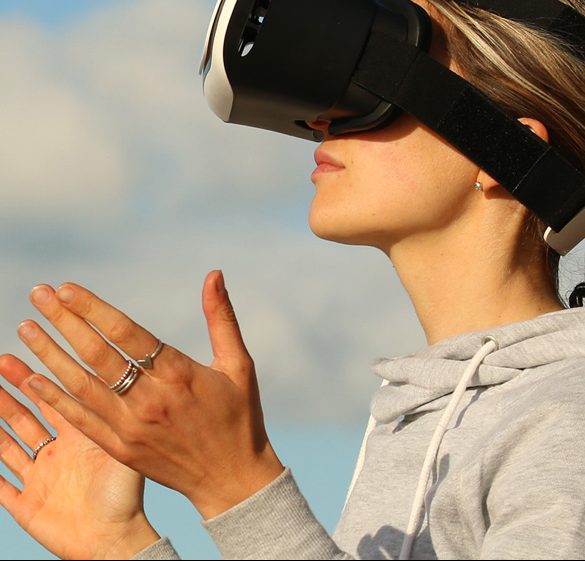There was Tron in the 80s, Lawnmower Man in the 90s, and Minority Report in the 2000s. In fact, there has been fascination with the idea of virtual reality since the term was introduced in science fiction writings during the 1950s. Ever since, people have been trying to turn this fiction into reality. However, it wasn’t until the last year or two that VR actually seemed like a plausible technology.
Today, there are high-end VR systems like Oculus Rift and HTC Vive. There are VR headsets that use your phone like Google Cardboard and Merge VR. During the 2016 holiday season, commercials for PlayStation VR and Samsung Gear VR ran ad nauseam. Furthermore, just about every major motion picture is accompanied by a VR experience these days.
Why, after a half-century of failed attempts, is virtual reality finally thriving?
The origins of VR are actually quite interesting. In 1968, a computer scientist created the Sword of Damocles, which is widely considered the first head-mounted virtual reality system. The system’s creator, Ivan Sutherland, used a computer program to show the user virtual environments in a stereoscopic display. The system was very basic and required the user’s face to be strapped firmly to the device.
While VR picked up a little steam over the 70s and 80s, it mostly remained speculative due to the lack of raw computing power. Some arcade games were utilizing 3D graphics, but the VR industry during this time was mostly relegated to flight simulators and military training.
In the 90s, it seemed like virtual reality was finally ready to make its mass-market debut in the form of gaming. Sega introduced Sega VR at the Consumer Electronic Show in 1993. Then, Nintendo released Virtual Boy in 1995. However, Sega VR never left the prototype phase and the Virtual Boy was widely considered a commercial failure. Users of both systems complained of motion sickness and unimpressive graphics. It seemed as if virtual reality had experience yet another false start.
VR was a huge benefactor of Moore’s law. By 2010, computers were getting more and more powerful, and thanks to the smartphone, they were also getting smaller and smaller. This computing power helped pioneer the technology that is used by modern VR devices. This same year, Lucky Palmer created his first prototype of the Oculus Rift, which had a 90-degree field of vision, an industry breakthrough.
In 2013, Valve made another breakthrough when they discovered low-persistence displays, which helped make for a lag-free and clearer VR experience. Oculus would use this same technology in their future prototypes. In 2014, Facebook purchased Oculus for $2 billion. That same year, Sony announced the development of a VR headset for the PlayStation 4. It seemed that virtual reality had finally made its grand debut.
Most experts agree that the VR industry is on the cusp of something huge. All over the world, companies are making massive investments into virtual reality. Digi-Capital estimates VR to be a $17 billion industry in 2017, with the figure rising to $120 billion by 2020. It’s fairly safe to assume that as far as virtual reality goes, the future is now.


